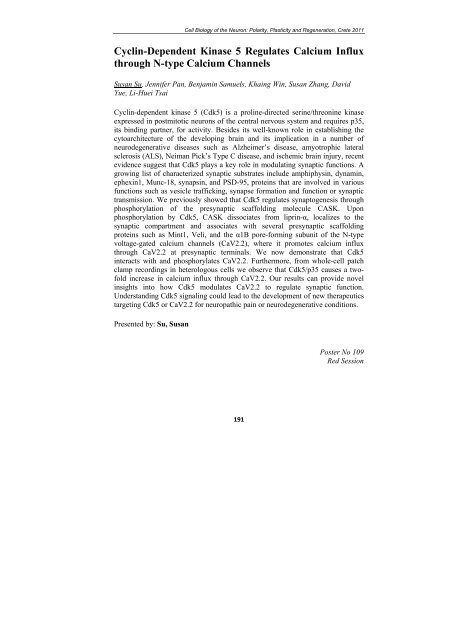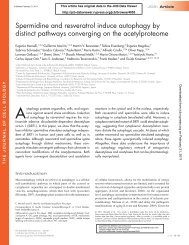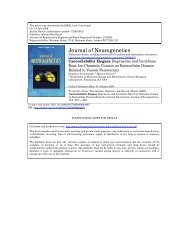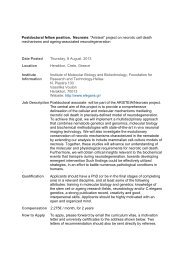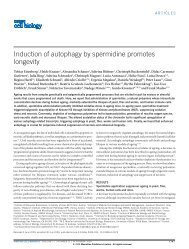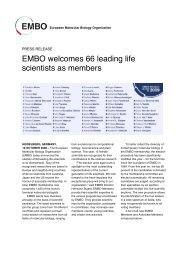CELL BIOLOGY OF THE NEURON Polarity ... - Tavernarakis Lab
CELL BIOLOGY OF THE NEURON Polarity ... - Tavernarakis Lab
CELL BIOLOGY OF THE NEURON Polarity ... - Tavernarakis Lab
Create successful ePaper yourself
Turn your PDF publications into a flip-book with our unique Google optimized e-Paper software.
Cell Biology of the Neuron: <strong>Polarity</strong>, Plasticity and Regeneration, Crete 2011<br />
Cyclin-Dependent Kinase 5 Regulates Calcium Influx<br />
through N-type Calcium Channels<br />
Susan Su, Jennifer Pan, Benjamin Samuels, Khaing Win, Susan Zhang, David<br />
Yue, Li-Huei Tsai<br />
Cyclin-dependent kinase 5 (Cdk5) is a proline-directed serine/threonine kinase<br />
expressed in postmitotic neurons of the central nervous system and requires p35,<br />
its binding partner, for activity. Besides its well-known role in establishing the<br />
cytoarchitecture of the developing brain and its implication in a number of<br />
neurodegenerative diseases such as Alzheimer’s disease, amyotrophic lateral<br />
sclerosis (ALS), Neiman Pick’s Type C disease, and ischemic brain injury, recent<br />
evidence suggest that Cdk5 plays a key role in modulating synaptic functions. A<br />
growing list of characterized synaptic substrates include amphiphysin, dynamin,<br />
ephexin1, Munc-18, synapsin, and PSD-95, proteins that are involved in various<br />
functions such as vesicle trafficking, synapse formation and function or synaptic<br />
transmission. We previously showed that Cdk5 regulates synaptogenesis through<br />
phosphorylation of the presynaptic scaffolding molecule CASK. Upon<br />
phosphorylation by Cdk5, CASK dissociates from liprin-α, localizes to the<br />
synaptic compartment and associates with several presynaptic scaffolding<br />
proteins such as Mint1, Veli, and the α1B pore-forming subunit of the N-type<br />
voltage-gated calcium channels (CaV2.2), where it promotes calcium influx<br />
through CaV2.2 at presynaptic terminals. We now demonstrate that Cdk5<br />
interacts with and phosphorylates CaV2.2. Furthermore, from whole-cell patch<br />
clamp recordings in heterologous cells we observe that Cdk5/p35 causes a twofold<br />
increase in calcium influx through CaV2.2. Our results can provide novel<br />
insights into how Cdk5 modulates CaV2.2 to regulate synaptic function.<br />
Understanding Cdk5 signaling could lead to the development of new therapeutics<br />
targeting Cdk5 or CaV2.2 for neuropathic pain or neurodegenerative conditions.<br />
Presented by: Su, Susan<br />
191<br />
Poster No 109<br />
Red Session


